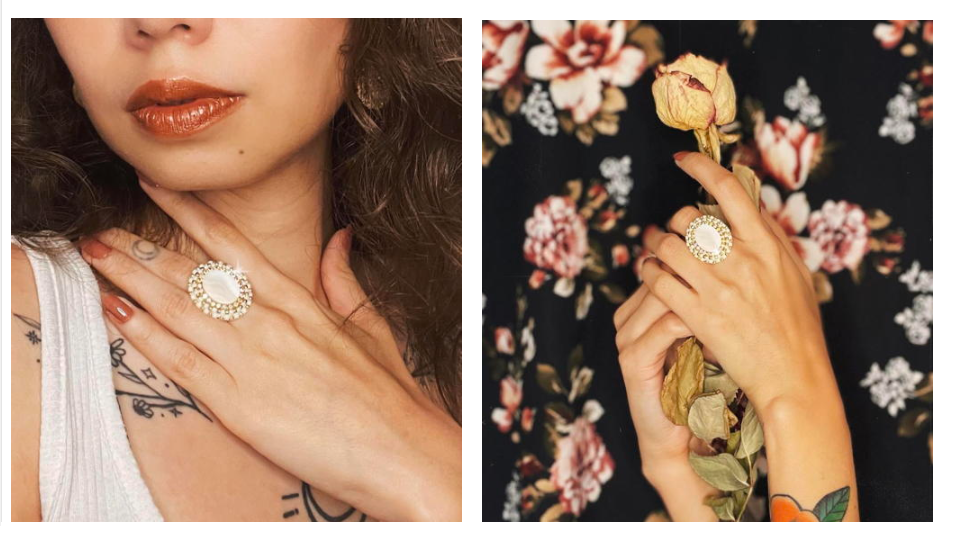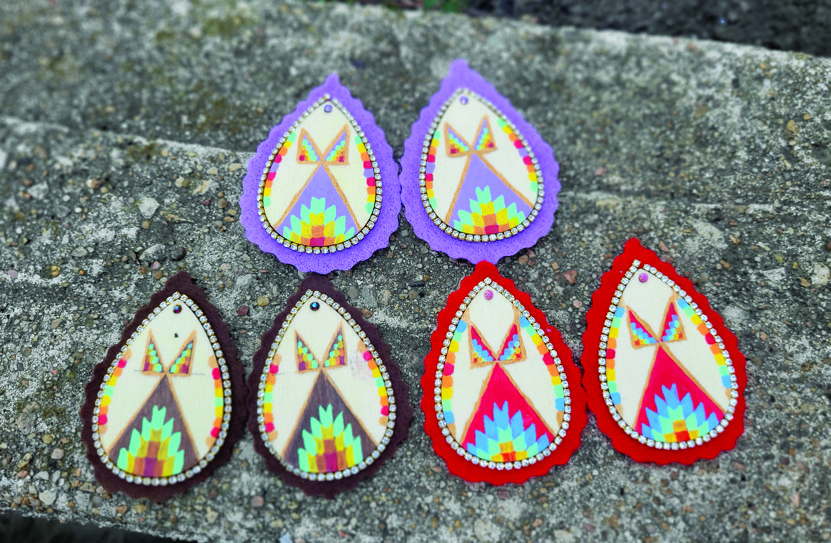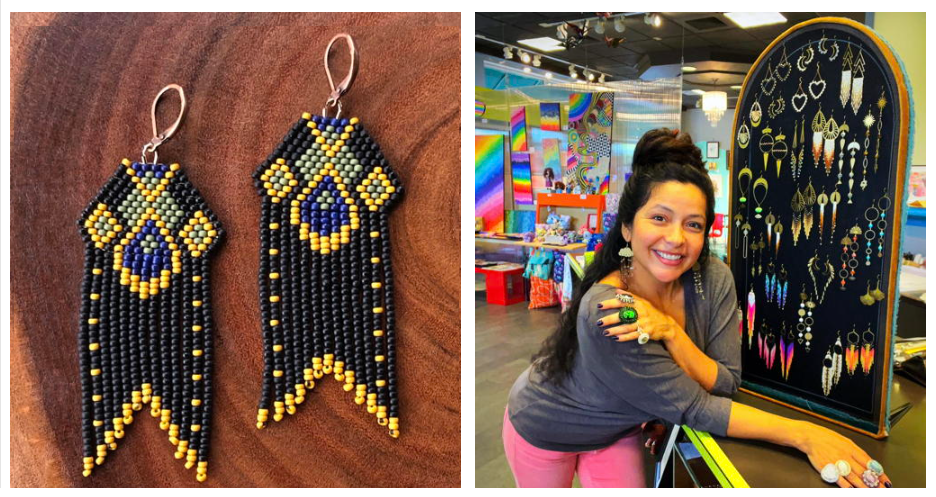Across cultures, jewelry has long held social, economic, and personal value. It allows people to express their identity, personality, and individuality. Within Native American culture, jewelry takes on a more spiritual role, offering pathways to healing and cultural reconnection. In some cases, Native American jewelry may act as a bridge to initiate meaningful dialogues and forge connections between Indigenous communities and the wider society.
Lawrence jewelry artist, Monique Mercurio, hails from the Ohlone Costanoan Esselen Nation. She founded the jewelry brand, Merc Tribe Designs, and is the event coordinator for the Art Love Collective, in which her jewelry and other local artisan wares are sold. Beyond the storefront location, Monique showcases her jewelry on Instagram where she fulfills custom requests. These pieces are not only beautiful but serve to aid in healing, a tradition passed down through generations of matriarchs in her family. “My grandmother taught me the healing properties of stones and how those are connected to our culture,” she said. “When I got older, I incorporated that with jewelry making.”

Merc Tribe Designs (Photo Credit: Dessa Starr)
Monique said her custom designs are crafted to provide support in areas of life that cater to the wearer’s unique needs. Each bead carries a prayer or a positive thought for the person for whom it’s created. This is why Monique begins each commission by getting to know her client and understanding their individual and spiritual needs. Client requests vary, from enhancing positive qualities to providing emotional strength during challenging times. “With that information, I have a little private ceremony in my studio and ask Creator to guide me through the kind of medicine that you need,” she said. “I incorporate colors, stones, and different patterns, and come up with a creation that is almost like a wearable talisman – a reminder.”
In the same vein, Julia White Bull, a jewelry artist from Lawrence and a member of the Standing Rock Sioux Tribe, emphasized the significance of intention when working with beads and stones. She explained that negative emotions can influence both the creative process and the wearer of the jewelry. Therefore, in her culture, maintaining positive energy is essential. As a result, she strives to infuse positivity into every aspect of her work, which she showcases on Facebook and Instagram. “If I’m not in a good headspace, my artwork will come out sloppy, and those feelings go into that artwork,” she said. “I feel like I’ll put that off on whoever buys it or I give it to. So I do a lot of my artwork when I’m in a really good head space.”

Designs by Julia White Bull, jewelry artist
Apart from the positive intentions infused into her work, Monique noted that her work has had other positive outcomes. The jewelry has captivated non-Indigenous people, creating opportunities to spread awareness about Native American culture. “I’m given the opportunity to share about my culture with others and help allies become more supportive and more understanding of what that allyship looks like,” she said. “Having Native American-made jewelry out in the public, on all kinds of people, brings awareness to the fact that we’re still here. We’re still creating very potent medicine. And we’re still here to share our journey, share who we are.”
In addition, selling her work allows a broader range of people the rare opportunity to own custom Native American jewelry, which is not readily available in mainstream fashion. While mass-market fashion might mimic the beauty of Indigenous designs, Monique notes this is appropriation – not appreciation. Moreover, true Native jewelry is one of a kind, and infused with painstaking effort and intentionality. “I like to use the hashtag, #NativeCouture, because I want people to understand that what bead or quill artists create is so couture,” she said. “It’s unlike the kind of couture that mainstream media thinks of. Our items are harvested from the earth.”
As an example, quill workers harvest porcupine quills from the land. They then clean and hand dye the quills. “It takes a while,” Julia said. “Your hands bleed. You have to dye them. It’s a lot of work.” While Julia does not focus on quillwork, she did witness her father at work on the craft. “My father was really a distinguished artist, and he passed away in 2012,” she said. “I watched him paint, sew, bead, and do quillwork. So I really was inspired because of how exquisite his work was.”
Beyond the painstaking measures to prepare the materials and infuse the right energy into the work, Julia incorporates traditional symbolic motifs into her designs. These geometric designs often depict abstract designs of teepees, plants, and other natural elements. Julia said her work is also inspired by the beadwork she has seen throughout her life, attending powwows. She learned beadwork and sewing from her parents as an adolescent rite of passage during a womanhood ceremony. Today, she puts those skills to work, creating masterful beadwork inspired by her culture. “I get jewelry inspiration from powwows,” she said. “You see these older women wearing this extravagant jewelry. And when they say ‘I did it,’ I’m like, wow! I can do it too. I deeply enjoy doing art.”

Dessa Starr modeled some beautiful jewelry from Merc Tribe Designs. (Photo Credit: Dessa Starr)
Both Monique and Julia teach jewelry making workshops for the general public and for their Indigenous communities. Not only do these workshops teach non-Natives Indigenous skills, they also bring Native communities together, which Monique said has a healing quality. “Those classes or workshops that I hold for my intertribal relatives aren’t just teaching them a technique on how to bead,” Monique said. “It’s medicine to be together, and to have those conversations, and putting that kind of medicine into the work that we’re creating makes for very potent healing art.
Julia said that by teaching, she can carry on a legacy of art passed down from one generation to the next. “I don’t want this art to go to waste, and I want other people to pick it up,” she said. “When I’m gone someday I want it to continue just like how my dad is gone now and I’m still continuing his legacy.”
Featured in the November 11, 2023 issue of The Independent.
By Monica V. Reynolds